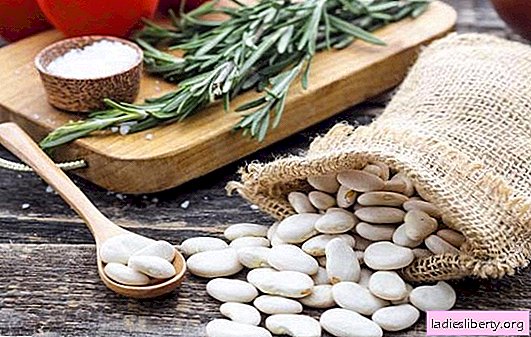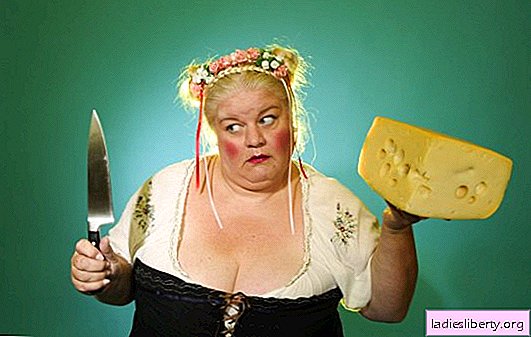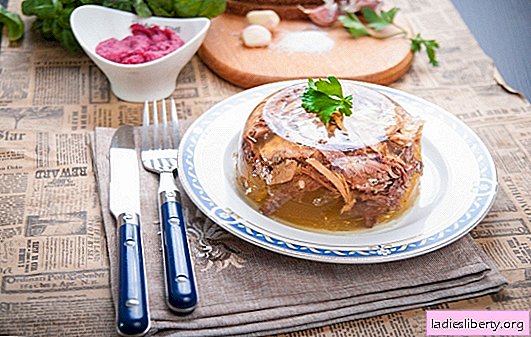
Hoya or wax ivy is a beautifully flowering liana of the gore family. In nature, more than 200 species of plants are known, but only some of them are bred in indoor floriculture. The fact is that growing hoya requires certain knowledge and skills, although flower growers consider it a completely unpretentious flower.
What kind of flower is Hoya: description and characteristics of the plant
In nature, liana is found in Australia, Indonesia and South China. Its stems are braided by stony hillsides, tree trunks. For the first time, an English botanist Robert Brown singled out a flower in a separate group. He described amazing fleshy inflorescences, the pollen of which is enclosed in gelatinous formations - pollinia. Something similar is found in orchids.
The leaves of the hoya are oval or heart-shaped, leathery, their color is due to the variety of the plant. Inflorescences umbrellas are formed in the axils of the leaves. The flowers are small, have 5 rounded petals, very fragrant. The color of the flowers is diverse: white, pink, red, yellow and even brown.
Each type of hoya blooms at a certain time of the year, and more mature specimens are able to please flowering on the same peduncles. However, flowering is not long, the flower lasts no more than 7 days. But the foliage does not lose decorativeness at any time of the year.
The best varieties and varieties of hoya for indoor floriculture
The most common plant among flower growers is the meaty Hoya or Hoya carnosa. Shoots hanging, powerful, slightly pubescent. The leaves of the creeper are succulent, dark green, shiny, with short petioles. Flowering begins in spring or summer, the flowers are fragrant, white or pink.
Popular varieties:
· Hoya carnosa Variegata - leaves with a white border, pink flowers;
· Exotica - variegated hoya, the center of the leaf plate is creamy yellow, the edge is green;
· Tricolor - a vine with wavy leaves, the center of the plate of a young plant is red, then it acquires a yellow hue.
This variety of vines is very hardy, easily tolerates a lack of watering and high temperatures in the winter. Grows in any soil, prefers diffused light, although it blooms only in good light.

The majestic Hoya or Hoya imperialis is a winding vine with pubescent shoots, the length of which reaches 2 m. The leaves are smooth, dense, oval in shape. Inflorescences in the shape of an umbrella, each up to 10 flowers. The size of the flowers is about 6 cm in diameter. Externally, the flowers look like stars. The main color is dark red or raspberry, a whisk of white color. Flowering lasts about two weeks, all this time the plant exudes a slight smell of perfume.
The best varieties of majestic hoya:
· Palawan - yellow shades of petals with a red coating;
· Alba - white flowers with a green tint;
· Borneo red - flowers with a fruity aroma, their color is lilac.

No less attractive Kerry hoya or kerrii, popularly called it "Valentine". It's all about the leaves of the plant, which look like a heart. Liana shoots long shoots that require support. Her leaves are large, more than 15 cm, fleshy. Their color can be green or with white stains. Inflorescences are spherical umbrellas, contain up to 25 fluffy flowers. The color of the petals can be pink, lemon, yellow, red or brown. It depends on the amount of lighting and the age of the plant. Liana grows very slowly, suitable for beginner growers. It reproduces easily, does not require special care, but does not tolerate soil moisture.

There is also Hoya Emglore - a small-leaved epiphytic shrub. The flowers are large, up to 2 cm in diameter, white. Petals bent back. The crown of the flower is a purple hue. The inflorescence is not tight, only 4-5 flowers. It is found in nature in Thailand.

Beautiful Hoya - a highly branching shrub that is grown as an ampelous plant. The leaves are dark green, but depending on the variety, they may be variegated. Inflorescences are very elegant, consist of 9 flowers of white color with a dark red crown. Unlike meaty hoya, she prefers a cool wintering, so that the temperature does not rise above 16 ° C. It does not tolerate dry air and stagnation of moisture in the pot, for prolonged flowering requires a lot of light.

All about growing the best varieties of hoya at home: what soil to plant, when to transplant, how to water
In order for the hoya to take root in the apartment and enjoy the flowering, it is necessary to create suitable conditions for the liana. Epiphytic plants prefer a low air temperature from +17 ° С to +25 ° С. In winter, it must be reduced to +15 ° C. If you grow hoya without a period of rest, then flowering may not occur.
Important! With a prolonged decrease in temperature to +10 ° C, the liana drops its leaves.
Hoya belongs to photophilous plants, some varieties tolerate shading, but under such conditions they are reluctant to bloom. However, putting the pot in direct sunlight is not worth it. It is best to place it near a window or on a wall where there will be diffused light. Experienced flower growers are advised to immediately choose a permanent place for the liana, since the plant does not like to be rearranged. From this fall leaves and buds.
How to choose the soil
The plant is not whimsical to the soil, a neutral substrate is suitable. But some species prefer a special composition. It is prepared like this:
· Two parts of turf land;
· One part of leaf humus;
· One part of sand and peat.
Particular attention should be paid to soil drainage.
Proper watering and humidity
A tropical plant prefers a humid climate, but does not tolerate excessive soil moisture. From this it follows that it is better to spray the plant once more than to water it.
During the period of active growth, the soil is moistened as necessary, for this, used water is used. In winter, watering is reduced, especially if the liana is cool.
When to transplant a creeper
Hoya develops best in a spacious pot, so young plants are transplanted annually. Adults require a transplant every 3 years. However, flowering species are grown in tight containers, then the inflorescences appear regularly, and the flowering period is longer.
What is the best way to propagate some varieties of hoya
Liana is well propagated by seeds, layering and cuttings. The latter method is often used in indoor floriculture. And this is not surprising, the plant takes root quickly.
Propagation by cuttings is carried out in spring and autumn. The rooting substrate should retain moisture well. Use a mixture of peat and sand in equal amounts. Cuttings are not cut at an angle, since the roots are formed in the internodes.
Rooted cuttings in greenhouses with high air humidity, the temperature is maintained at +20 ° C. Rooting takes up to 3 weeks.

Problems When Growing Hoya At Home
Although growing hoya is easy, some growers face problems.
Sometimes the plant slows growth, reluctantly lets out new shoots. In this case, the leaves look twisted, dry and fall off. There are several reasons for this phenomenon:
· Too low air temperature in winter;
· Bright light and direct sunlight;
· Dry indoor air and lack of moisture in the soil;
· Lack of nutrients in the soil.
It is enough to eliminate the cause and the hoya will again start to grow.
Another problem for the grower is the lack of flowers. The main reason is considered a lack of lighting and improper wintering of the plant. Flowering can be stimulated. To do this, the pot is first kept in a cool room for about 1.5 months, after which it is immersed in warm water for 2.5 hours. Flowering will not take long.











